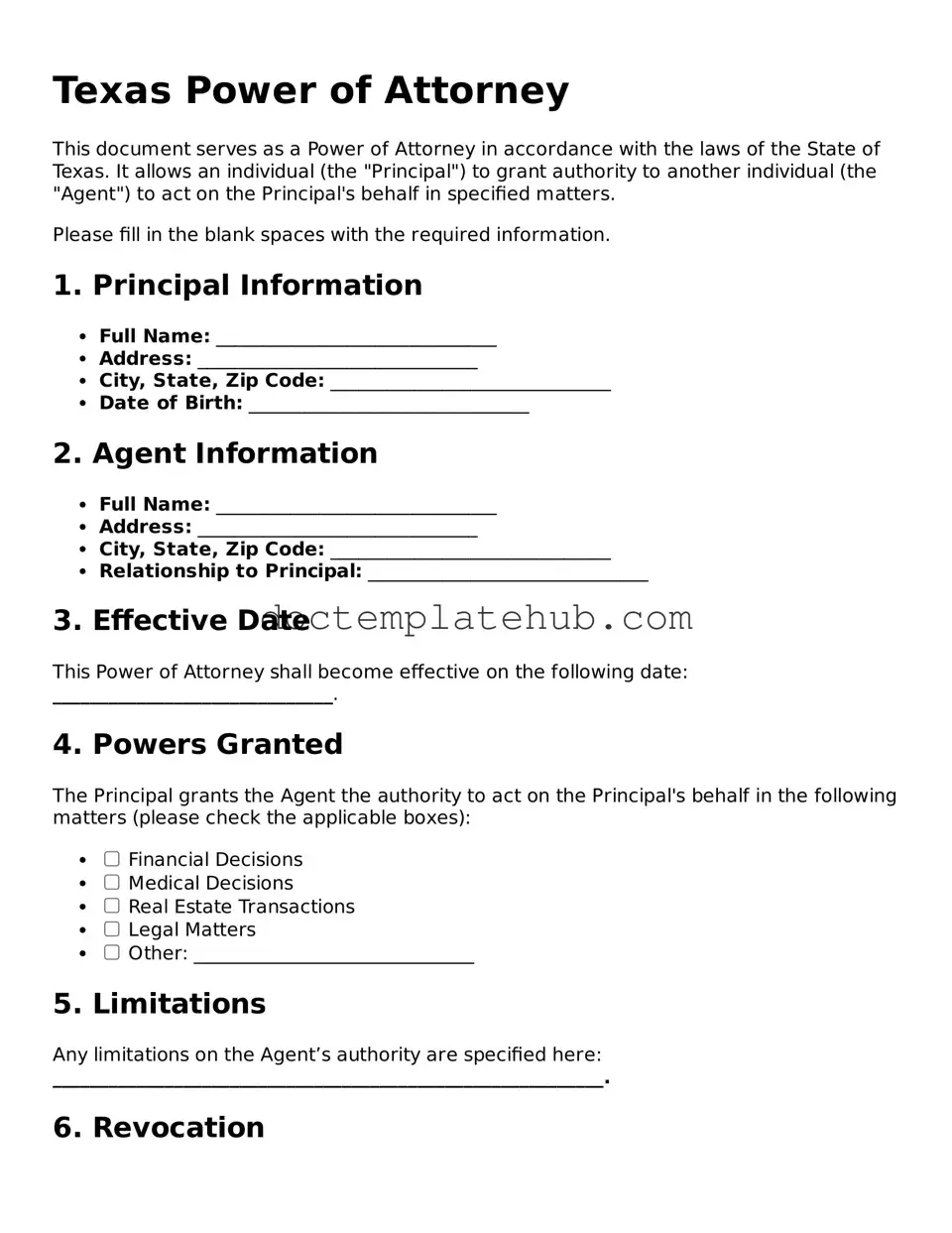What is a Power of Attorney in Texas?
A Power of Attorney (POA) in Texas is a legal document that allows one person, known as the principal, to appoint another person, called the agent or attorney-in-fact, to make decisions on their behalf. This can include financial matters, medical decisions, or other specific actions. It’s an important tool for ensuring that someone you trust can manage your affairs if you become unable to do so yourself.
What types of Power of Attorney are available in Texas?
In Texas, there are several types of Power of Attorney. The most common include the General Power of Attorney, which grants broad powers to the agent, and the Medical Power of Attorney, which specifically allows the agent to make healthcare decisions for the principal. There is also a Durable Power of Attorney, which remains effective even if the principal becomes incapacitated. Each type serves different needs, so it’s essential to choose the one that fits your situation best.
How do I create a Power of Attorney in Texas?
Creating a Power of Attorney in Texas involves a few straightforward steps. First, you’ll need to choose a trusted individual to act as your agent. Next, you can either use a template or draft your own document, ensuring it meets Texas legal requirements. The document must be signed by you, the principal, and it should be notarized or signed by two witnesses. Once completed, it’s a good idea to provide copies to your agent and any relevant institutions.
Can I revoke a Power of Attorney in Texas?
Yes, you can revoke a Power of Attorney in Texas at any time, as long as you are mentally competent. To do this, you should create a written revocation document, clearly stating that you are revoking the previous POA. This document should be signed and ideally notarized. Once revoked, inform your agent and any institutions that may have a copy of the original POA to prevent any confusion.
What happens if my agent misuses their authority?
If your agent misuses their authority, it can lead to serious consequences. You can take legal action against them, which may include filing a lawsuit for breach of fiduciary duty. In some cases, it may be necessary to report the agent to law enforcement if they engage in criminal behavior. It’s crucial to choose an agent you trust and to monitor their actions to ensure they act in your best interest.
Do I need a lawyer to create a Power of Attorney in Texas?
While you don’t necessarily need a lawyer to create a Power of Attorney in Texas, consulting one can be beneficial. A lawyer can help ensure that the document is properly drafted and meets all legal requirements. They can also provide guidance on the best type of POA for your needs and help you understand the implications of the powers you’re granting. If your situation is complex, seeking legal advice is a wise choice.
